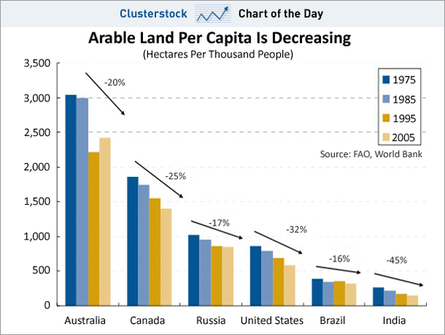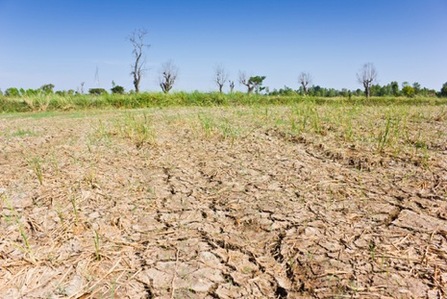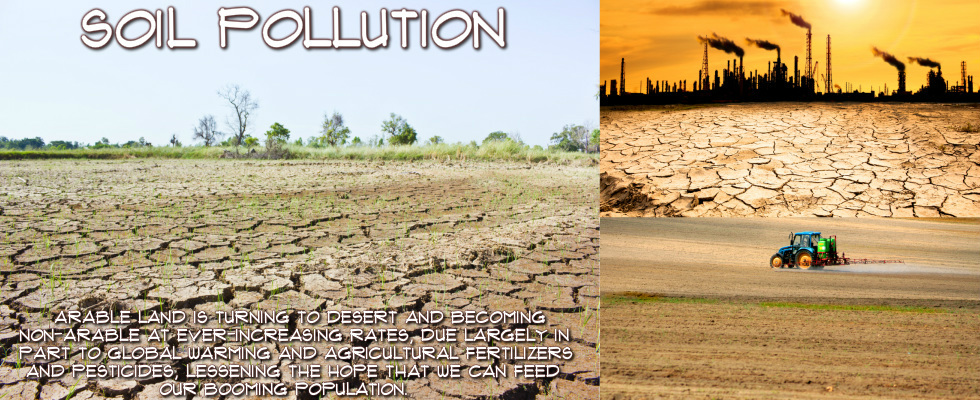
Soil Pollution
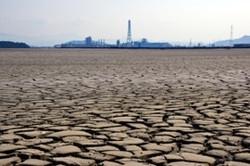
Soil pollution occurs when the presence of toxic chemicals, pollutants or contaminants in the soil is in high enough concentrations to be of risk to plants, wildlife, humans and of course, the soil itself. Arable land is turning to desert and becoming non-arable at ever-increasing rates, due largely in part to
global warming
and
agricultural fertilizers and pesticides, lessening the hope that we can feed
our booming population.
Within 40 years, there will be over 2 billion more people, which is the equivalent of adding another China and India.
Food production will have to increase at least 40% and most of that will have to be grown on the fertile soils that cover just 11% of the global land surface. However, there is little new land that can be brought into production and existing land is being lost and degraded. The
United Nations Food and Agricultural Organization states
that annually, 75 billion tons of soil, the equivalent of nearly 10 million hectares, which is about 25 million acres, of arable land is lost to erosion, water-logging and salination and another 20 million hectares is abandoned because its soil quality has been degraded.
Contact with contaminated soil
may be direct, from using parks, schools etc., or indirect by inhaling soil contaminants which have vaporized or through the
consumption of
plants or animals that have accumulated large amounts of soil pollutants,
and may also result from secondary contamination of water supplies and from deposition of air contaminants.
Learn more.
Causes of Soil Pollution
The redundant, ever-increasing use of chemicals
such as pesticides, herbicides, insecticides and fertilizers is one of the main factors causing soil pollution by
increasing its salinity making it imperfect for crop bearing and adversely affecting the microorganisms present in the soil, causing the soil to lose its fertility and resulting in the loss of minerals present in the soil, thus causing soil pollution and killing off more than just the intended pest.
Other types of soil contamination
typically arise from radioactive fallout, the rupture of underground storage tanks, percolation of contaminated surface water to subsurface strata, leaching of wastes from landfills or direct discharge of industrial wastes to the soil, unfavorable and harmful irrigation practices, improper septic system and management and maintenance, leakages from sanitary sewage, acid rain falling onto the soil, fuel leakages from automobiles, that get washed away due to rain and seep into the nearby soil and unhealthy waste management techniques, which are characterized by release of sewage into the large dumping grounds and nearby streams or rivers.
Learn more.
Effects of Soil Pollution
Soil pollution can have a number of harmful effects on ecosystems and human, plants and animal health. The harmful effects of soil pollution may come from direct contact with polluted soil or from contact with other resources, such as water or food which has been grown on or come in direct contact with the polluted soil.
Humans
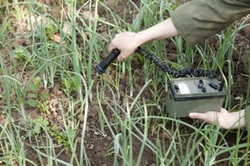
Many common soil pollutants are carcinogenic
causing humans who are exposed to these pollutants to be
far more likely to develop cancer
than those who are not. For example,
regular exposure to benzene is known to cause leukemia in both children and adults
and
exposure to polychlorinated biphenyls (PCBs) is linked to liver cancer. Soil pollution can also cause
neuromuscular blockage as well as depression of the central nervous system, headaches, nausea, fatigue, eye irritation and skin rash. Soil does not need to be highly contaminated to be harmful to humans. Soil that is not significantly polluted may still harm humans directly though
bioaccumulation, which according to
Pollution Issues, occurs when plants are grown in lightly polluted soil, which continuously absorb molecules of the pollutants. Since the plants cannot get rid of these molecules, they accumulate in the plant, causing higher amounts of pollution to exist in the plant than in the soil. Animals who eat many of these polluted plants take on all the pollution those plants have accumulated. Larger animals who eat the plant-eating animals take on all the pollution from the animals they eat.
Humans who eat plants or animals that have accumulated large amounts of soil pollutants may be poisoned, even if the soil itself does not contain enough pollution to harm human health.
Furthermore,
the presence of heavy metals in soil in toxic amounts can cause irreversible developmental damage in children.
Lead and mercury in soil may also be harmful to human health. Although lead and mercury may be found naturally in soil, high concentrations of either metal
may cause damage to the developing brains of young children, which in turn may lead to neurological problems.
Humans of any age may also suffer kidney or liver damage from exposure to excessive mercury in soil. In addition to endangering human health, soil pollution can also cause economic damage. For example, in some parts of China, soil that is polluted with heavy metals is nevertheless used to grow grain. The grain grown in these soils is often polluted with heavy metals. According to
China Dialogue, an estimated 12 million tons of polluted grain must be disposed of each year, costing Chinese farmers up to 20 billion yuan, or about $2.57 billion U.S.
Learn more.
Animals

Soil pollution can negatively affect the metabolism of microorganisms and arthropods, which can destroy some layers of the primary food chain and have a harmful effect on predator animal species. Also, small life forms may consume harmful chemicals in the soil which may then be passed up the food chain to larger animals, which may lead to increased mortality rates and even animal extinction. Learn more.
Environment
According to
Pollution Issues, soil pollution naturally contributes to air pollution by releasing volatile compounds into the atmosphere - so the more toxic compounds soil contains, the greater the air pollution it creates - and can lead to water pollution if toxic chemicals leach into groundwater or if contaminated runoff or sewage, which can contain dangerous heavy metals, reaches streams, lakes, or oceans. When applied repeatedly or in large amounts, these heavy metals can accumulate in soils to the point that it is
unable to support plant life. Moreover, soil pollution allows great quantities of nitrogen to escape through ammonia volatilization and denitrification and the decomposition of organic materials in soil can release sulfur dioxide and other sulfur compounds, causing acid rain. Furthermore,
acidic soils created by the deposition of acidic compounds, such as sulfur dioxide brought about by the burning of fossil fuels,
produce an acidic environment that harms micro-organisms, which improve the soil structure by breaking down organic material and aiding in water flow. Soil pollution may
alter plant metabolism and reduce crop yields and cause trees and plants that may absorb soil contaminants to pass them up the food chain.
Soils polluted by acid rain have an impact on plants
by disrupting the soil chemistry and reducing the plant's ability to take up nutrients and undergo photosynthesis. Soil pollution also causes
the loss of soil and natural nutrients present in it, hindering plants ability to thrive in such soil, which would further result in soil erosion and disturbing the balance of flora and fauna residing in the soil. While aluminum occurs naturally in the environment,
soil pollution can mobilize inorganic forms, which are highly toxic to plants and can potentially leach into ground water, compounding their effects.
Soil pollution increase the salinity of the soil
making it unfit for vegetation, thus making it useless and barren. If some crops manage to grow under these conditions,
they would be poisonous enough to cause serious health problems in people consuming them.
The creation of toxic dust is another potential effect of soil pollution. Furthermore,
contaminated soils with high levels of nitrogen and phosphorus can leach into waterways, causing algal blooms, resulting in the death of aquatic plants due to depleted dissolved oxygen. Finally,
acidic deposition into the soil can hamper its ability to buffer changes in the soil pH, causing plants to die off due to inhospitable conditions.
Learn more.

